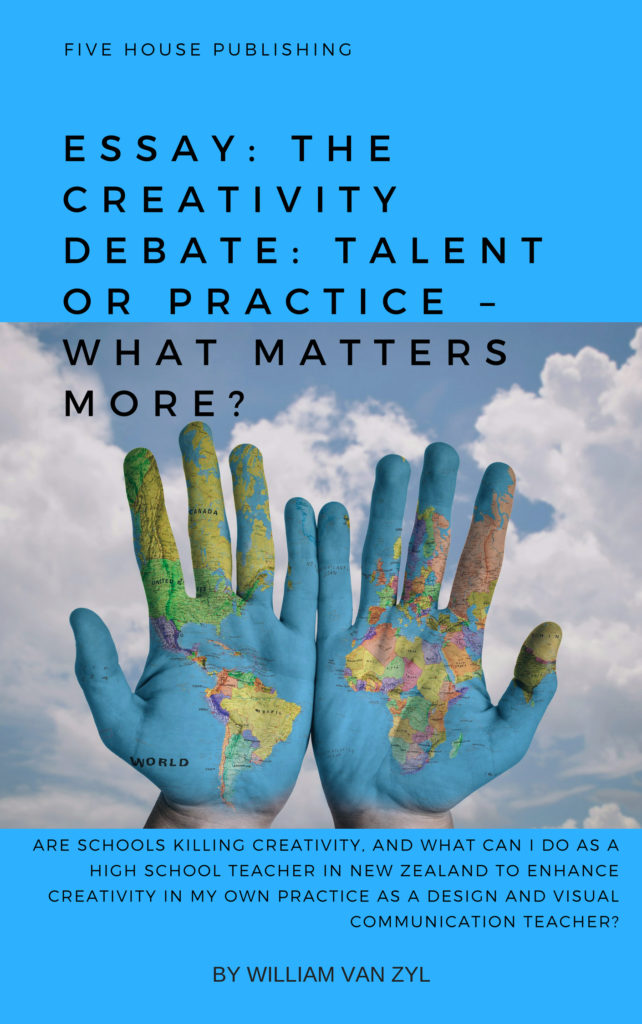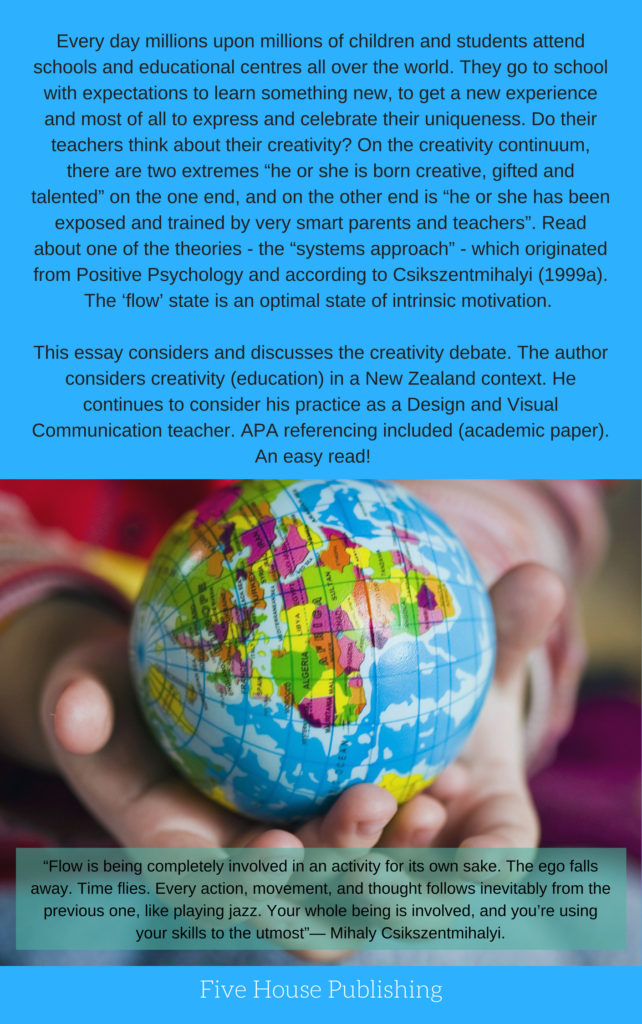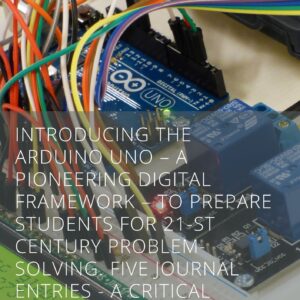$1.99
Paper description:
7600 Words. 61 pages (A4 size) font size 14 P. Includes images, and video links. APA Referencing. An easy read!
APA Style Essay.
‘The Creativity Debate, Talent or Practice, What Matters More?’ is an essay which investigates the different positions taken by teachers and educators, The perspectives are compared on a continuum. The author considers creativity and education in the essay. He also considers his practice as a Design and Visual Communication teacher in an education New Zealand Context. First published in 2016 (edited in 2018).


Description
Contents
ESSAY: The Creativity Debate: Talent or Practice – What Matters More?. 6
References. 41
So, what could a creative lesson for a DVC year 10 student look like (15 years of age)?. 45
Sustainable Turtle House. 45
Situation: You are a turtle living in Mexico (South America) during the age of the Aztec civilisation. You see the Aztecs travelling every day by boat (canoe) transporting vegetables, meat, etc. on their waterways. You and your turtle family live on the banks of the large lake and swim among the Aztec daily. Remember the Aztecs build their city on stilts in the water. It is the year 1521 … 45
Design Brief: Design a sustainable turtle house for you and your family. The structure has to house 4 x turtles in total, including your mom and dad (or caregivers). Use bio-mimetics (ask nature how) to guide you. You have to think like a turtle (draw on your experiences-research). However, you must construct it like a human being. In other words, think like a turtle and construct (build) like a human. 46
‘The Turtle Island’ – Inspired by the American Indian (mainly Iroquois) story of creation, of which there are a few slightly different versions. 47
Sir Ken Robinson on creativity: 50
More books by the author related to this book: 55
About the essay:
Is creativity an innate ability people are born with (Essentialism perspective), or is it learned (‘Developmentalism view’)? The liberal perspective includes a broad range of criteria and includes a larger percentage of a school into the creative and gifted category. This view is more inclusive and makes more room to include about 10 to 15 percent of the school population (TKI New Zealand, 2013).
The contemporary approaches avoid stating any specific percentage of the school population because of the different interpretations of different schools and countries (TKI New Zealand, 2013). The essentialism view sees the “elite students” as “those who are blessed with a fixed set of traits that sets them apart from those who do not have these ‘gifts’. “From an essentialist perspective, high intelligence is something that is genetically endowed, is a neurological advantage that sets one apart from one’s peers and along with the right environmental circumstances it is the possession of this high intelligence that will lead to ultimate achievement later in life.” (Balchin, Dai, Horowitz, Kaufman & Sternberg, as cited in Tapper, 2012, p. 2).
Contemporary theories on giftedness and talent are at the far end of the Talent –Practice continuum. One of the theories the “systems approach” which originated from Positive Psychology and according to Csikszentmihalyi (1999a) the ‘flow’ state is an optimal state of intrinsic motivation. This happens when the individual is fully immersed and taken up into what they are doing.
VIDEO: FLOW BY MIHALY CSIKSZENTMIHALYI |
ANIMATED BOOK REVIEW
Excerpt:
So, what could a creative lesson for a DVC (Design &
Visual Communication) year 10 student look like (15 years
of age)?
Sustainable Turtle House
Situation: You are a turtle living in Mexico (South America) during the age of the Aztec civilisation. You see the Aztecs travelling every day by boat (canoe) transporting vegetables, meat, etc. on their waterways. You and your turtle family live on the banks of the large lake and swim among the Aztec daily. Remember the Aztecs build their city on stilts in the water. It is the year 1521 …
Design Brief: Design a sustainable turtle house for you and your family. The structure has to house 4 x turtles in total, including your mom and dad (or caregivers). Use bio-mimetics (ask nature how) to guide you. You have to think like a turtle (draw on your experiences-research). However, you must construct it like a human being. In other words, think like a turtle and construct (build) like a human.

IMAGE: Turtle Island. Credit: Pixabay.com
Here is an excerpt to inspire you. American Indian culture. It is not Aztec related, but it will generate some inspiration!
‘The Turtle island’ – Inspired by the American Indian (mainly Iroquois) story of creation, of which there are a few slightly different versions.
A short story:
According to Iroquois oral history, Sky Woman fell to the earth when it was covered with water. Various animals tried to swim to the bottom of the ocean to bring back dirt to create land. Muskrat succeeded in gathering dirt, which was placed on the back of a turtle, which grew into the land known today as North America. In the Seneca language, the mythical turtle is called Hah-nu-nah, while the name for an everyday turtle is Ha-no-wa
How to harness your imagination: First read about Aztec culture, look at images of the people, their houses, their art, and their artefacts. The next step is to read about freshwater turtles. Reflect on your knowledge of sustainable architecture and start generating design ideas for a turtle house! Consider the sustainable features, function, and the aesthetics (‘how beautiful’). Could you ask nature how? – Biomimetics.





